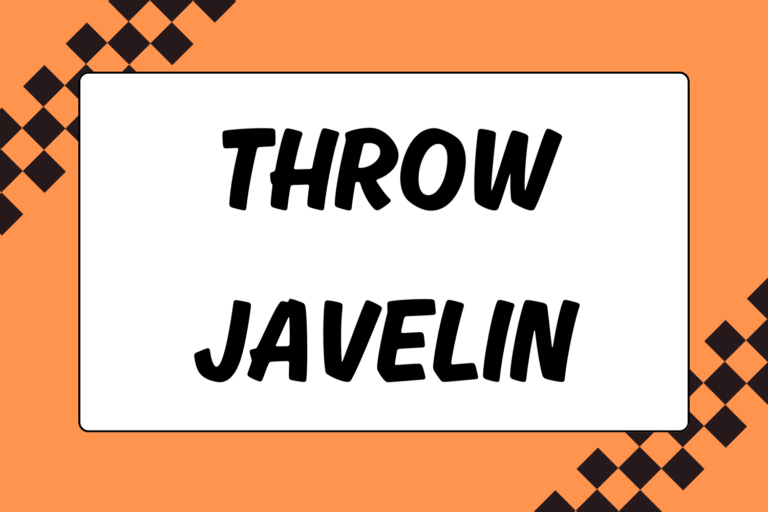The idea of soaring through the air with your arms stretched towards the sky is what hooks athletes and makes them want to compete in the long jump. It’s as if -for a brief moment – your own power and skill has enabled you to actually fly. Once gravity takes over, the high of flying ends with a giant splash of sand and the thrill of competition.
Long Jump Technique
The long jumper is a sprinter first and foremost. You must control your speed down the runway to hit the takeoff board at the right moment to propel up and forward. The farther you jump into the pit, the better. Stepping over the front of the takeoff board will lead to a disqualification. Please do not start training for the event without the help of a coach.
Here are the steps involved with executing a successful long jump:
The Approach
The term ‘approach’ means literally that- how you come running up to the jumping pit. The key to a strong run-up is consistency and control. In the beginning, the easiest way to determine the length of your run is to test a start between 12 to 18 strides behind the board:
- Count the number of steps it takes to hit the board properly by counting your takeoff foot each time it hits the ground.
- Start your approach by pushing off your back foot with your head down, similar to a sprint start. Stay low for the first 4 to 6 strides, depending on how long your approach is.
- Gradually pick up speed. As you transition out of your start, bring your head up and your hips forward.
- Do not slow down during the last four strides. The goal is to run through the board.
- Keep your body tall and your eyes straight ahead. The final step is an explosive push off the board. You can land on any part of the board as long as it is not over the line closest to the sand pit.
The last two steps for the long jumper, called the takeoff steps, are the most crucial. At this point, you want to be at a controlled maximum speed. Your feet should land flat on the ground. Generally, the second to last stride will be a little bit longer than the last stride, but some athletes will use a short/long method. It doesn’t really matter, but use the technique that keeps your feet flat on the ground the last two steps and allows you to explode off the board.
Hot Tip: Get Stronger
The faster and stronger you are, the longer your approach will be. Keep in mind that while you get more momentum with a long start, it is also harder to control and stay consistent.
The Takeoff
Think “out and up” for takeoff technique. As your takeoff foot hits the board, your opposite leg and arm drive out and up with hips high. You should maintain good speed even while in the air.
The Flight
There are three different styles used for the flight part of a long jump. They are the: sail, hang and hitch kick. The best thing to do is start with a simple technique and progress as you gain more experience.
The Sail:
This is the most basic technique; when performed, it looks like you are reaching out and touching your toes.
- After the takeoff, drive your free leg out and hold it in front of your body as long as possible.
- The takeoff leg will move into the same position once you are in the air.
- Bring your arms forward towards your toes, which keeps you from falling back at the landing.
The Hang:
This style is a little more stable, and helps bring the feet up higher above the ground.
- After takeoff, drive your free leg forward and up then drop it underneath your hips.
- The takeoff leg will then come up to meet the free leg.
- The knees should be bent at a 90-degree angle and will look like a backwards ‘L.’
- Extend your arms and reach up over your head. At the peak of the jump, rotate your arms forward. This should also cause your legs to extend forward.
The Hitch-Kick:
The most advanced long jump technique, it looks like a running motion in the air.
- At the take off, drive the free leg up to make 90-degree angle.
- The opposite arm of your free leg will pump upwards. You will then bring your free leg back to make a circular motion but your body should be moving up and forward. The opposite arm will also make a circling motion back as well.
- As the free leg is cycling, bring the takeoff leg to a 90-degree angle and start to extend it outwards. The arm opposite of the takeoff leg should also start coming forward and extend it out as well.
- As your free leg finishes making a cycle, move it forward to take join the take off leg for landing. Bring around the second arm so both are extended outwards. You will then push you arms back but keep your body forward and bring your chin towards your knees.
The Landing
You should always land feet first into the pit, no matter what flight style is used. Drive forward throughout the landing. Do not sit back; when determining the distance for your jump, officials will mark the spot closest to the beginning of the pit. This means if you land and fall backwards, you jump’s mark will be placed at the spot where you fell, not the spot that you landed.
Earn Your Wings
Running and jumping are pretty basic skills, but getting them to work harmoniously will take time and practice. It may help to break it down into the steps listed above and work on each individually, but in any case the more you do it, the better you’ll be.





